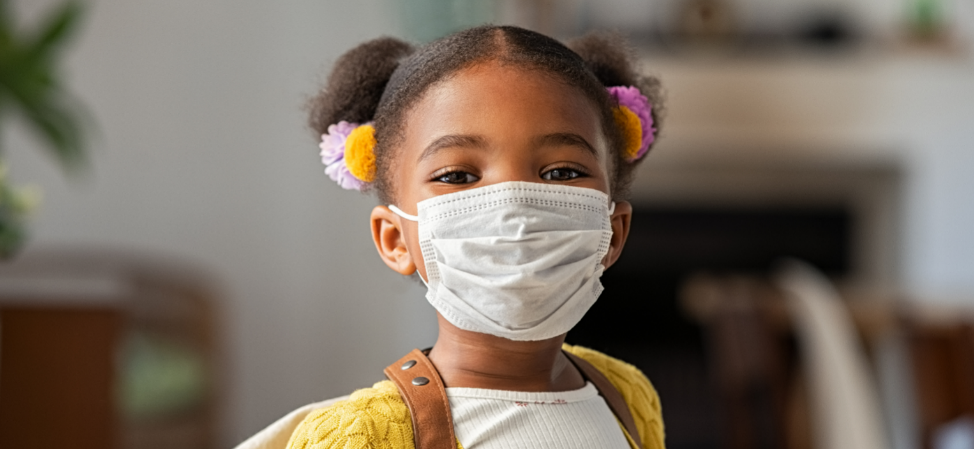 Investments in girls’ education benefit all of society. Photo credit: Rido / Adobe Stock
Investments in girls’ education benefit all of society. Photo credit: Rido / Adobe Stock
Girl’s Education: The Highest Return on Investment Any Country Can Make
Thirty years ago, at the 1992 World Bank Annual Meetings, then-Chief Economist Larry Summers made a now-famous statement showcasing the importance of girls’ education. “Investment in girls’ education may well be the highest-return investment available in the developing world,” he said at the event, and wrote in a detailed paper.
On International Women’s Day, it is important to recognize that educational outcomes for women have significantly improved over the past few decades. More girls are educated today than ever before, and literacy rates for young women have steadily increased over the years.
However, there is still a cloud that looms over the progress in girls’ and young women’s education – girls are disproportionally affected by a wide range of challenges in and around their schooling. These challenges have persistent effects on their life outcomes, and their engagement with the labor market. Gender-based violence still disproportionally affects women and girls, in school and in their communities. We have known for some time that unhygienic sanitary conditions in schools mean girls miss schools while menstruating. If family income is limited, boys are still more likely to be selected to be sent to school over girls. Child marriage and early pregnancy still disproportionally affect women and girls, which has adverse effects on their education outcomes. And in male-dominated fields such as STEM, young women take up only a minority percentage of enrollments in higher education and career participation.
While girls on average do better in school and learning outcomes in some subjects, these higher learning gains are not translated into better labor market opportunities for girls. In regions like South Asia and the Middle East and North Africa female labor force participation rates remain dismally low, at 24% and 20% per region, respectively.
The COVID-19 Pandemic and its Effects on Girls
Even further, debilitating shocks to education systems, such as the COVID-19 pandemic, see girls taking the brunt of the negative effects in many contexts, even more so for girls in the lowest income groups, girls from ethnic minorities, and girls with disabilities. Evidence is now emerging on the varied effects that the school closures due to the COVID-19 pandemic have had on girls’ and young women’s education.
Overall, World Bank estimates show that as a result of school closures in low- and middle-income countries, the share of all children living in Learning Poverty (children who cannot read or understand a simple text by age 10) will rise sharply, potentially up to 70% from 53% previously. While some studies have not found significant differentiated impacts on learning and dropout between genders, in others there are signs that girls may face increased obstacles. A study in South Africa found larger learning losses for girls (English learning losses in 4th graders were 27% higher for girls than for boys). Data from Bangladesh showed one in 10 girls aged 12-15 not going back to school after their school reopened. Higher rates of dropout for girls were found in grades 10 and 12 in Uganda and in Kenya.
Additionally, girls spending more time at home were also affected. Data from a study in Nigeria found that fathers reported actively discouraging their daughters, but not their sons, from using the internet, and were less likely to assist their daughters’ learning through technology during the pandemic. In Ethiopia and Bangladesh, adolescent boys were more likely than adolescent girls to receive help from their family with their schoolwork. A survey of girls in Bangladesh, found that 53% of girls reported spending less time on education than before the COVID-19 lockdown, and 93% report more time spent on household chores and childcare. On top of these issues, impacts have also been keenly felt on mental health for children and youth, especially for the most vulnerable. While these are a few examples and evidence is still emerging, they paint a clear message: girls already disadvantaged by education systems and society will be worse off after the COVID19 pandemic.
The World Bank & Girls’ Education
The statement by Larry Summers 30 years ago still holds true today. The World Bank and its education team consistently encourage partner governments to invest in girls and gender equality in education, which shows as a higher percentage of our portfolio each year supports interventions focusing on closing gender gaps in education for girls and young women. In 2020 and 2021 alone, we supported major projects in Angola, Nigeria, and Pakistan, for example, that have a specific focus on improving outcomes for girls.
To mitigate the effects of COVID-19, World Bank education teams responded swiftly to work with governments and counterparts to meet current needs, with several projects adding components to address the issues of dropout and retention that could disproportionately affect girls. In Chad, a WB funded project includes an advocacy campaign focused on reducing drop-outs due to COVID-19 and preventing exacerbated effects of GBV during this time. In Sudan, a WB education project is creating specialized learning material for disadvantaged students who have been affected during the pandemic, including a specific focus on girls. In Malawi, additional financing for a project includes grants to schools to provide cash transfers in an effort to get children back into school, with a special focus for girls. Our projects in Uganda, Ethiopia, Benin, Pakistan, and Bangladesh all have components for advocacy campaigns about girls’ re-enrollment in schools as they open.
The World Bank believes multi-pronged approaches are needed to ensure that girls are able to attend and thrive in school, and that their families are supported to be able to do so. Schooling and education alone may not solve or create equality for women and girls worldwide but creating gender equality in education – at all levels – remains a key step to progressing women’s rights worldwide. On International Women’s Day in 2022, it is a strong reminder that investments in girls’ education benefits all of society at a much greater level.
For more information on our girls’ education investment and projects, please read Count Me In: The World Bank Education Global Practice: Improving Education Outcomes for Girls and Women, which highlights our decades-long commitment to girls’ education and showcases how Education GP projects are creating opportunities for girls around the world to succeed in their education and beyond.




Join the Conversation